I'm starting this thread for terrestrial orchids, such as Cypripedium. I'll start out with a common "cyp" familiar to many of you, Cypripedium parviflorum var. pubescens. I know I went overboard shooting photos, but I just had to show some images, the plants have outdone themselves this year. Three unseasonably hot days pushed these along faster than I could have imagined, when they were just barely hinting as showing buds mere days ago. The bigger of my two large clumps has 32 pips this year.
Comments
Re: Terrestrial Orchids
Sometimes each pic is so good, you just can't decide which ones you shouldn't keep... Beautiful specimens, Mark.
Alas, I have no orchids in my home gardens here. But there are many, many species in varied habitats near our cabin in northern Minnesota.
If you make any field trip and find some of these goodies, please snap a few pics and share them with us :D
PS. When I think about photographing plants, and this spring I have taken thousands of pictures (couple hundred each day), some plants are infuriatingly difficult to photograph and capture a good likeness, others like this Cyp is so photogenic, that it is impossible NOT to take great pics, each and every one ;D Now, with C. reginae coming later, I get terrible pics of that one, it is the light white and pink flower that never shows correctly.... I'll work on that one in a month or so.
Re: Terrestrial Orchids
Fabulous Mark...what an amazing clump! You see these often enough now, but rarely with such size and flower power.
Re: Terrestrial Orchids
Regarding pics of white flower, you can set your camera to a negative exposure setting, or in close photos, hold a white sheet of paper (even small tablet size) in the camera's view while the camera sets its exposure, and remove it when you actually snap the picture.
Re: Terrestrial Orchids
The parviflorum in our BG are just breaking the surface, as are the C. acaule...it will be mid-June before they bloom here. You certainly have some impressive clumps!
Re: Terrestrial Orchids
The parviflorum in our BG are just breaking the surface, as are the C. acaule...it will be mid-June before they bloom here. You certainly have some impressive clumps!
Todd, at the BG, how do they successfully cultivate C. acaule? It is around in our woods, but I know that they don't usually move successfully. I once did yard work for a wealthy woman, who had about 10 acres of land. She wanted some of the "pink ladyslippers" moved from further in her property to someplace closer to her house and wooded garden. Few ever made it in the long run. Then for a huge apartment complex going in (the firm I worked for was the Architect for this project), I was allowed to salvage some plant materials before they fully bulldozed the site; there were magnificent stands of C. acaule; once again none of the salvaged plants made it in the long run. Maybe I just don't understand what they need. Any hints on cultivation?
Re: Terrestrial Orchids
I wonder if anyone has thought about the needs of the other partner in the symbiotic relationship. (I am just assuming there is one.) If the fungus (or whatever it might be) dies, can the plant live on?
Re: Terrestrial Orchids
Mark, we have the C. acaule naturally in the 100 acres of forest surrounding the cultivated gardens...we have never cultivated it in captivity! I expect our native population is probably around 500 plants.
Re: Terrestrial Orchids
I am very impressed, Mark! I have never really tried to grow Cypripediums although I hope to do so one day.
Here in Norway they are very hard to find for sale and it is not allowed to remove the native C. regale (which I have seen twice in the wild) from the woods.
Re: Terrestrial Orchids
This is a very common orchid in Norway, Orchis mascula. They are sought-after by animals! You can see the deer has taken a leafy tidbit. Before the neighbor started with sheep you could count thousends of the species in the wood here in springtime.
Re: Terrestrial Orchids
Very beautiful, Trond! (Too baaaa-d about the sheep though. ;) Ugh, sorry! :D)
Re: Terrestrial Orchids
I saw loads of this orchid in the Pyrenees when I viisted there 2 springs ago.
Re: Terrestrial Orchids
Here in Idaho some of the orchids are allready long out of bloom. some are just getting started. I went out today June 13 2010 and took these pictures:
C. regineae

B. striata
E. gigantea

Orchis unknown
Re: Terrestrial Orchids
The only thing that would be good about having colder weather than zone 8 (for me that is) is growing more Cypripedium. I have 6 Cypripedium macranthum from a very low elevation in China with warmer winters but they have yet to flower for me. I might have some flowers this coming Spring (I hope) they are about 6 yr from deflasked seed now. But I do grow Dactylorhiza and Bletilla ochracea and other Bletilla in the garden.
Re: Terrestrial Orchids
Here in Idaho some of the orchids are already long out of bloom. some are just getting started. I went out today June 13 2010 and took these pictures:
Jim, somehow I missed your post of all these orchid photos... very nice!
Re: Terrestrial Orchids
I would love to grow more orchids in my garden but here in Norway they are very hard to get hold of. I don't know any supplier of garden orchid here. If I buy from abroad it is a lot of paperwork to be done (by the supplier) and they often do not dispatch to Norway.
Re: Terrestrial Orchids
I am with you on that. I wish I could find a good source for Dactylorhiza in the US there are lost of them in the UK but now they charge $60.00 per plant or bulb that is on the CITES list :( . Politics as usual you can have it if you have lots of cash. You can get lots of Orchids on Ebay from China but it is a Federal crime here unless you have a CITES permit and they cost a lot there.
Re: Terrestrial Orchids
Here it is October 21st and my Bletilla ochracea thinks it is Spring again. It is flowering now and has two more flower stalks coming up. The joys of nature :).
Re: Terrestrial Orchids
How do you think the Bletilla will take the winter if it starts anew now? (Also something to add to the wishlist!)
Re: Terrestrial Orchids
Good question! I guess I will find out in spring! We usually don't get hard frost where I live till December or later depending on the year. Last year our firt frost was Dec. 12 and it got down to 10 or 12 degrees F. for 2 days (and that was way colder than normal years) then almost no frosts under 27 the rest of the winter.
Re: Terrestrial Orchids
A Cypripedium in flower now:
Cypripedium 'Emil' (C. calceolus x parviflorum)
Re: Terrestrial Orchids
A Cypripedium in flower now:
Cypripedium 'Emil' (C. calceolus x parviflorum)
A dramatically handsome hybrid. Judging from the parentage, it should be perfectly easy and hardy outside. Are you growing yours in a pot or the open ground? I see this often on the SRGC pages, where apparently a number of Cyp species and hybrids are available and popular in Europe, unfortunately they are virtually unavailable or unobtainable here.
Re: Terrestrial Orchids
A Cypripedium in flower now:
Cypripedium 'Emil' (C. calceolus x parviflorum)
A dramatically handsome hybrid. Judging from the parentage, it should be perfectly easy and hardy outside. Are you growing yours in a pot or the open ground? I see this often on the SRGC pages, where apparently a number of Cyp species and hybrids are available and popular in Europe, unfortunately they are virtually unavailable or unobtainable here.
I grow it outside...perfectly hardy as you say! I have it in the shade in a soil enriched with compost.
In Europe there are a few people who have refined the sowing of these plants and who have made alot of gardenworthy hybrids: Werner Frosch of Frosch's Cypripedium: http://www.w-frosch.de/Cypris/menu_e.htm, Jan Moors of Crustacare: http://www.crustacare.be/Plants/HomepagePlantsEnglish.html and Svante Malmgren: http://www.lidaforsgarden.com/Orchids/cypripedium_eng.htm to name a few. They are starting to be mass-produced too: on gardenfairs in Belgium and our neighbouring countries you can find a lot of these hybrids for sale already, the prices are still very high though, on average 25-35 euro's for a plant. Last year I found a batch of them for sale in a local gardencenter (probably the hybrid Ulla Silkens) for 8 euro's a piece, needless to say, i bought a few ;).
Re: Terrestrial Orchids
Wow, only 8 euro's each :o I'll check out those links later, have to get to work now. Just checked around for USA sources, and lo and behond, there's a source right here in Massachusetts! Oh no, I can see my money flying out of my wallet already ;)
http://www.hillsidenursery.biz/orchids/index.php#bkmrk67
I might have to indulge in a couple, because if they grow as easily as C. pubescens v. parviflorum or even C. reginae, they would be long-lived investments for the garden. My larger clump of C. pubescens v. parviflorum went from 32 or 34 pips, to 42 pips this year, the smaller clump is now up to about 30 pips. Must experiment and divide one of these clumps this year.
Also, Plant Delight's Nursery has a few. Seems the going price for these beauties is between $50-$100.
http://www.plantdelights.com/Cypripedium-Dietrich-Perennial-Dietrich-Har...
Re: Terrestrial Orchids
Wow, only 8 euro's each :o I'll check out those links later, have to get to work now. Just checked around for USA sources, and lo and behond, there's a source right here in Massachusetts! Oh no, I can see my money flying out of my wallet already ;)
http://www.hillsidenursery.biz/orchids/index.php#bkmrk67I might have to indulge in a couple, because if they grow as easily as C. pubescens v. parviflorum or even C. reginae, they would be long-lived investments for the garden. My larger clump of C. pubescens v. parviflorum went from 32 or 34 pips, to 42 pips this year, the smaller clump is now up to about 30 pips. Must experiment and divide one of these clumps this year.
Also, Plant Delight's Nursery has a few. Seems the going price for these beauties is between $50-$100.
http://www.plantdelights.com/Cypripedium-Dietrich-Perennial-Dietrich-Har...
Pricey, these things in the States...almost all of the hybrids (I see most of them are frosch hybrids) are very easy-growing!! You should try some...if your wallet can handle that ;)
Re: Terrestrial Orchids
A couple of terrestrial orchids in flower here now:
Epipactis gigantea and
Epipactis palustris
Re: Terrestrial Orchids
Bletilla ochracea in bloom now.
Quite pleased about this as I purchased it as Nomocharis aperta and could of course see at once when it came it was something different.
Re: Terrestrial Orchids
Wow, rarely do misidentified purchases turn out so well! I assume it is probably pot-grown, perhaps in a greenhouse. Is it hardy outdoors for you there? (Just curious... at the other end of the spectrum, Bletilla striata continues to be sold here, mass-produced in the Netherlands I think and sold bare-root, as a "hardy orchid" - fat chance. :rolleyes:)
Re: Terrestrial Orchids
Lori
it may be hardy but I am not taking that chance. It will overwinter frost free.
Re: Terrestrial Orchids
I was at The Garden In The Woods (a display garden and natural woodlands of the New England Wildflower Society, in Framingham, Massachusetts, USA) and one plant I always check out in late summer and early autumn is Spiranthes odorata (marsh lady's tresses). Not the showiest orchid in the world, but interesting for it's very late flowering, and fragrant blooms (scented like vanilla). And even though native to southeastern US States, primarily in a band that follows the coast, it is perfectly hardy here. It seems that the colony is getting overcrowded with larger plants; I'm seeing a number of spots in this garden where maintenance appears to be taking a back seat to other priorities.
USDA Plant Profile page (marsh lady's tresses):
http://plants.usda.gov/java/profile?symbol=SPOD
USDA distribution map... if it "touches" a US State, the whole State is shaded:
http://plants.usda.gov/java/profile?symbol=SPOD
Flora of North America distribution map... much more revealing!
http://www.efloras.org/object_page.aspx?object_id=8516&flora_id=1
Re: Terrestrial Orchids
Mark,
We have a similar orchid in the Chicago Region. Some of them have traits of Spiranthes magnicamporum. Others look exactly like the orchid you posted. The attached photo is from a colony I found that I thought was Spiranthes casei. The experts tell me the Spiranthes in the attached photo is Spiranthes cernua. I've just given up on trying to distinguish Spiranthes cernua, magnicamporum, and casei. I think at least Spiranthes cernua and Spiranthes magicamporum integrate and can only be distinguished in their most distinctive specimens.
Irregardless of taxonomic confusion, you can frequently find Spiranthes in open habitats from the Great Plains to the Atlantic Coast. The habitat is usually given as wet areas for Spiranthes cernua. However, I find Spiranthes cernua in drier locations. I think wetland habitats are listed because these were historically the only habitat in the East with a disturbance regime that kept the habitat in full sunlight. I frequently find large colonies of Spiranthes in dry fields that were previously in agriculture. I have been told it will grow from sown seed to flowering within three years in appropriate habitat. Most people I have talked to who have dug them for their gardens eventually lost them. They are so common I have always wondered why people try cultivation. If they would only look around I am sure they would find a number of wild populations nearby that they could enjoy.
James
Re: Terrestrial Orchids
Welcome to the forum, James!
Re: Terrestrial Orchids
Hello James, thanks for your input on this, and I'd love to see more. Isn't it funny (not really) how adaptable plants can be. Minnesota has three major biomes, prairie, deciduous woods and coniferous forest. It is not uncommon to observe the same species in all three, but with a different accompanying environment.
Re: Terrestrial Orchids
This is a picture of Spiranthes Autumnalis in SW Turkey and following the remarks on habitat I thought you may be interested in seeing it. It is widespread in Europe in a variety of habitats and this picture is of it flowering in October in a very dry situation in sparse pine woods. At that stage there had been no rain since April and it must be triggered into growth by the area cooling down in autumn. It is about 6 inches tall.
Re: Terrestrial Orchids
Welcome onboard James,
I'll be attending training all next week (Sept 26-29, flying back home the 30th, 2011) in St. Charles, Illinois, 34 miles west of O'Hare airport near Chicago. I'll keep my eyes focused on the native vegetation when I'm out running each day after training. Your interesting post mentions other Spiranthes species names with which I was unfamiliar, so I googled, here are some results:
Spiranthes cernua page at MissouriPlants.com
http://www.missouriplants.com/Whitealt/Spiranthes_cernua_page.html
Article by Barry Glick (the Glickster) of Sunshine Farm and Gardens
Spiranthes cernua odorata 'Chadds Ford' (a cultivar featuring slightly taller stems and larger flowers). While S. odorata and S. cernua have been distinct species for a long time, one still finds the combination "Spiranthes cernua var. odorata (Nutt.) Correll (1940)"
http://www.sunfarm.com/picks/spiranthescernuaodoratachaddsford-124020.phtml
Spiranthes cernua on the fine Kansas Wildflowers & Grasses site, with links to Spiranthes lacera var. gracilis and Spiranthes vernalis.
http://www.kswildflower.org/flower_details.php?flowerID=248
Spiranthes in Flora of North America (23 species):
...also see long discussion under the S. cernua entry
http://www.efloras.org/florataxon.aspx?flora_id=1&taxon_id=131021
Snippet from the key in Flora of North America:
14 - Spiranthes cernua
Lip distally acute to rounded, not truncate, usually more than 7.5 mm (in shorter flowers ovary often much shorter than perianth); flowers white to yellowish, arcuate-nodding only at base of perianth.
15 - Spiranthes casei
Lip distally truncate, 5–7.5 mm; flowers yellowish, cream, or ivory, arcuate-nodding for most or all length of perianth.
Re: Terrestrial Orchids
This is a picture of Spiranthes Autumnalis in SW Turkey and following the remarks on habitat I thought you may be interested in seeing it. It is widespread in Europe in a variety of habitats and this picture is of it flowering in October in a very dry situation in sparse pine woods. At that stage there had been no rain since April and it must be triggered into growth by the area cooling down in autumn. It is about 6 inches tall.
Fascinating little orchids, the way the flowers spiral up around the stem. Checking IPNI.ORG, there are over 900 name entries for Spiranthes, so evidently this is a big genus. Interesting to see how such a plant with well produced spire of flowers as S. autumnalis, can do so without moisture in the summer.
Re: Terrestrial Orchids
Tony,
The photo of Spiranthes autumnalis you posted looks a lot like the North American species, Spiranthes lacera.
James
Re: Terrestrial Orchids
Mark,
The population of Spiranthes I found had flowers ranging from 6.5 mm long to 13 mm. The specimen that our regional expert ended up collecting was on the larger side. This is why I believe the dried specimen ended up being identified as Spiranthes cernua. This surprised me considering a consensus had been reached that the plant was Spiranthes casei based on photos I had taken earlier. These original photos were of the first plant I discovered which had flower that were only 7 mm long.
James
Re: Terrestrial Orchids
Tony,
The photo of Spiranthes autumnalis you posted looks a lot like the North American species, Spiranthes lacera.
James
James,nice to see you on the forum. It could be the same thing!( I just saw Mark's post that flora of N. America gives 23 species of spiranthes,have they never heard of natural variation?)
It is not easy to grow and the Turkish ones are certainly tender and yet elsewhere across its range it is quite hardy.
Re: Terrestrial Orchids
Tony,
Although I have not read the paper, I am told genetic studies have been done to distinguish at least some of the species. However, this does not mean these species cannot produce stable hybrids.
James
Re: Terrestrial Orchids
They ought to start similar projects on some orchids too. Several endangered species have more specimens in university herbaria than in the wild.
Hoy,
Here in the States we have a group of dedicated volunteers that are working to conserve the Federally threatened Eastern Prairie Fringed Orchid, Platanthera leucophaea. In sites where pollination is not occurring volunteers make sure the job gets done. Seed is also collected and distributed to new sites. At least a few new populations have been established.
http://articles.chicagotribune.com/1996-08-04/news/9608040040_1_rare-orc...
Brush clearing is also occurring in areas where lack of light is impacting the orchid. Although, this is occurring more broadly to reverse the disappearance of prairie/savannah that has been progressing for decades from the impact of fire suppression.
These efforts to remove invasive woody vegetation may have a farther reaching impact. Grasslands reflect more solar radiation than forests. The old oak trees store more carbon than smaller diameter brush. These efforts could potentially help slow Global Warming.
Here's a story about a similar effort in arctic Russia.
http://www.msnbc.msn.com/id/40396941/ns/world_news-world_environment/t/o...
James
Re: Terrestrial Orchids
Tony,
Although I have not read the paper, I am told genetic studies have been done to distinguish at least some of the species. However, this does not mean these species cannot produce stable hybrids.
James
James I leave the naming to others confident in the knowledge that before long somebody will come up with a new system that will prove all others wrong,until the next one......
Interestingly I have Spiranthes sinensis both pink and giant forms and the reference I consulted says these are synonymous with S. spiralis which is synonymous with S. autumnalis and so it goes on.
Mark I never answered your point on them being able to grow to flower without moisture. They, as do most of the Mediterranean orchids, have an underground tuber which sustains growth until the rain arrives and subsequent root grow starts. Many start root growth before any moisture is present. I keep mine dry in the garage during the summer and they have all started to grow at re-potting in September.
Three of mine flowering now quite out of season.
Orchis morio
Ophrys lutes
Orchis anatolica
Re: Terrestrial Orchids
Reflecting on the past season and scanning through digital photos, catching up with some belated images. Cypripedium reginae is a slow but steady grower here, and has finally started to increase well, almost doubling the number of pips in the last two years. Didn't get a great photo because it was raining on the weekend when the plant was at peak flowering, but this photo will suffice. It flowers so late compared to C. parviflorum, at peak in late June, thus a great addition to the woodland garden.
Re: Terrestrial Orchids
Beautiful c. reginae Mark! I had one a couple years ago that I got at Cady's Falls Nursery here in VT. It flowered survived the following winter, bloomed again even better, then never made it through the next winter! I was so bummed. I'm going to try it again as I'm pretty sure my garden soil should support it with the correct PH and make up.
Re: Terrestrial Orchids
Oh, that's too bad Amy, to have lost such a treasure. Do you think it was winter cold that did it in, or something else?
Another nursery I'm looking to purchase from is Hillside Nursery in Shelburne Falls, MA.
Here's a link to their Cypripedium offerings.
http://www.hillsidenursery.biz/orchids/index.php
I'm encouraged by how the Cyps have done here, that I'm willing to shell out $40-$60 each to get a few new cultivars or hybrids in the garden.
Re: Terrestrial Orchids
I have tried Cyps thrice and only one plant still survive :-\ I think it is more than one reason that I haven't succeeded - slugs, climate and maybe soil conditions. But I am inclined to try again! However, not many nurseries sell these here so I have to import and that is not cheap :(
Re: Terrestrial Orchids
Oh, that's too bad Amy, to have lost such a treasure. Do you think it was winter cold that did it in, or something else?
I'm not sure why it died....I posted a pic of it in bloom here and it was looking really gorgeous and healthy, the following winter was quite snowy so it had good protection. Perhaps it was too wet through spring?
Another nursery I'm looking to purchase from is Hillside Nursery in Shelburne Falls, MA.
Here's a link to their Cypripedium offerings.
http://www.hillsidenursery.biz/orchids/index.php
I bought two Cyps. from Peter at the NARGS AGM in New Hampshire last June and have planted them in a different garden with morning sun instead of afternoon as before.....so we'll see. I followed the Cady's Falls planting directions.
Re: Terrestrial Orchids
a tiny terrestrial flowering for me now.
It has very nice leaves.
Hemipilia sp.
Re: Terrestrial Orchids
a tiny terrestrial flowering for me now.
It has very nice leaves.
Hemipilia sp.
I would say the leaves are the nicest!
Re: Terrestrial Orchids
I am late to this thread on terrestrial orchids. Regarding Cypripedium acaule, I believe that Fraser's Thimble Farm Nursery in BC has been successful getting plants growing artificially- see http://www.thimblefarms.com/cypripedium.html
Last year I moved my Cyp reginae to a better location. Hopefully being close to a pond will give it an extra boost this year. It will have a few really nice companions as well- Platanthera lacera, Platanthera psycodes (or Platanthera grandiflora), and Lysichiton camtschatcensis along with a few seedling Japanese iris. If all goes well, I ought to be able to take a few photos to share with the group.
Re: Terrestrial Orchids
Gordon, thanks for the tip on Cypripedium acaule on the Thimble Farms site. Even though this species grows in the woods nearby, I've never had luck growing it over the long term; maybe the revealed formula is the key.
When I was a boy at around age 10, I first came across Habenaria psychodes (as it was named in those days), and would go visit each spring to see this fine fringed orchid, and other nice woodland plants like masses of Clintonia borealis, and the aforementioned Cyprepedium acaule. You'll have to show us some photos when your plants are in bloom.
Plantanthera psycodes
http://plants.usda.gov/java/profile?symbol=PLPS2
http://wisplants.uwsp.edu/scripts/detail.asp?SpCode=PLAPSY
Re: Terrestrial Orchids
Hi Mark,
I'm just hoping that everything survives the wild temperature swings we have been getting over the past week, and into the week ahead (+9 c today, -7 tomorrow, and down to a high of -12 c by Thursday).
From what I have read, Cypripedium acaule requires an extremely acidic medium for its root zone. I've heard of folks amending the plant site with masses of pine needles to drop the pH as far as possible. I remember visiting a patch of them as a child, seeing them growing in rock crevices filled with mosses and the like. To be honest, I thought they'd perish from drought, but I guess these spots collected enough rain runoff to keep the plants happy.
Re: Terrestrial Orchids
Hope your new plants do well, Gordon- we have those temperature swings here as well, but it's quite normal-- we were above freezing part of the week (+12 some days ago) with a high of 15C today...
Here are a couple of pics of our local Spiranthes- S romanzoffiana-- I have more and better pics somewhere, but this is the first set I came across. I know them from two sites nearby, though there are surely more. They used to grow on the farm, but have been shaded out over the years as woodies etc grew up.
Both sites are on roadsides and in the ditch in one case, moist areas (though this site, right at the edge of the gravel road must get dry on occasions, even though it is wet just below the road). Soils are mostly clayey subsoils left after road building many years ago, and any humus layer must be very thin.. There are quite a few plants at both sites, and all small, probably 15 cm more or less.
The last shot shows the habitat for this site, in the grassy verge with Parnassia palustris, Gentianopsis crinita, sedges, clover etc..
Re: Terrestrial Orchids
Hi Cohan, tanks for the Spiranthes photos. There are a few species locally, though none on our property. I hope to add Spiranthes cernua var. odorata 'Chadd's Ford' to the garden, along with a handful of Dactylorhizas and Cypripediums over the next few years.
This year we seem to be having a Calgary style winter... snow, then chinook-like conditions- snow vanishes overnight, and the cold descends again. It was -18 C overnight- the coldest it has been since we moved here in 2009. There are a couple of plants in the garden which will have a real challenge pulling through this cold. Euphorbia 'Tasmanian Tiger' is out there, braving the cold, and I somehow doubt it will survive (rated zone 7-8).
Who knows what will pull through this winter... but I'm definitely looking forward to adding a few new gems to the place come springtime.
Re: Terrestrial Orchids
Gordon, have you perused the hardy orchid offerings at Thimble Farms in British Columbia; the list of Bletilla is great (would love to try a hardy yellow one), but the vast list of Cypripedium is unbelievable, mouth-watering photos of most of them. Considering what they are, the prices are within reason; I would gladly spring for trying a few. Given that Cypripedium calceolus var. pubescens does splendidly here, I would love to try more hardy cyps, including many hybrids that have this cyp as one of its parents.
Warning: viewing this page may induce diminishment of one's wallet and bank account ;)
http://www.thimblefarms.com/cypripedium.html
Re: Terrestrial Orchids
Gordon- I guess it will be a good test winter for you.
I'm still awaiting time and new test plants here to tell me how things do with my winters- I have more persistent snow cover than Calgary, and hopefully that will help with some things such as woodlanders, but based on some of Lori's observations in Calgary, and my very early observations, I suspect it will be a disadvantage with some drylanders that don't appreciate the extra moisture, especially during spring melt period.
-18 sounds very mild to me as a maximum low, so I'm sure you can grow all sorts of things that are out of the question here :)
Mark- Frasers T.F. does have some great stuff! I've never ordered yet, but looked at the list for years..
Re: Terrestrial Orchids
Here are three of the lesser and one of the more flashy orchids growing wild "everywhere" although not at my acreage of course.
Coeloglossum viride, Corallorhiza trifida, Listera cordata and Orchis mascula.
Re: Terrestrial Orchids
Nice ones, Trond
Coeloglossum is listed for Alberta, and not uncommon- but if I have seen it, I did not distinguish it from the great numbers of greenish Platanthera- quite possible, since google shows me some plants which do not have that extra bit of colour yours seem to, but rather do look like the many green bog orchids here (which I do like, but very common and not showy, so they don't get the attention of a Calypso!)
Listera cordata is also listed for Alberta, but not as many sites, and I'm quite sure I have not seen it..
Corallorhiza trifida is common on my acreage and around it- interesting, since I do not remember it at all from my younger years here..
Of course we have nothing like the purple Orchis...lol
Re: Terrestrial Orchids
I have some catching up to do with you all.... have been busy clearing driveways for the neighbours. Mark- I visited Fraser Thimble Farm when I lived in Vancouver. The only reason I'm not still in the poorhouse was because I was a student at the time, and had no place to build the woodland garden of my dreams. They have such an incredible assortment of plants for the conoisseur. I would have loved to walk out of there with at least a dozen Cyps, Dactylorhizas, Calanthes, and a few pots full of Pleiones as well. Was also drooling over the Dicksonia antarctica ferns. They used to carry a hybrid Pleione 'Shantung' that was an amazing peachy golden tone. I can still dream of the day I have a bulb pan full of them. They also regularly offer discounted mature Trilliums for sale- Trillium 'noid', bags of them. Maybe I'll take them up on it one of these years and see if we can come up with who they all are!
Cohan, we have been here since October 2009, and this is the first time we've had extended cold below -10 C. The average winter high is at this time of year is -1 C, and we haven't had anything warmer than -13 for the past week. It will be interesting to see if Acanthus mollis, and Euphorbia 'Tasmanian Tiger' manage to pull through. It wouldn't be all that hard on things if only the snow would stick around.
Trond- Nice photos! I've always liked the genus Orchis, and would love to try growing a few. The other European genus that has caught my attention is Ophrys. I haven't seen many in my travels, but remember reading articles on their pollination biology. One local plant that sadly is not on our acreage is Arethusa bulbosa. This little gem, and a few other of our local plants can be found on Brier Island, a great spot for plant and bird lovers. Here is a link to a photo page in the Nova Scotia Wild Flora Society showing Arethusa and several other gems:
http://www.nswildflora.ca/specPics/jSwift/Brier1/Brier1.html
Re: Terrestrial Orchids
It looks like the European Coeloglossum is a bit showier- some dark or light but less green, and more compact inflorescences.
Yes, we do have Calypso and Amerorchis - though I haven't seen it since I've been back, the patch where it used to grow was logged, and it's one of those things you'd be unlikely to see out of flower.. also Corallorhiza maculata
Re: Terrestrial Orchids
Definitely no rocks around here for Coeloglossum (I'll need to look more closely this year to see if it's there, but I suspect so)- for surface rocks you have to get into the foothills!
Re: Terrestrial Orchids
You are welcome, Lis!
Coeloglossum viride is rather common both at the coast and in the lower alpine region here although I have only seen the alpine forms. It is not always rocky where it grows as it can be rather boggy too but not very acidic.
All these are growing on rocky outcroppings but with plenty of alkaline water seeping in the cracks. The first picture shows the companion plants.
Re: Terrestrial Orchids
I don't know about Ontario, Lis, but in the west it seems our Coeloglossum looks little like Trond's.
Here is a plant that I think may be it, I'm going to have to look more closely this year, but note the long bracts which I think are characteristic of the species.. I need to reqad through the keys some more to see if there is any other important character I'm missing...In any case, images I've seen online of North American examples look more like my plant and not like Trond's at all..
My feeling is that the more or less extended bracts may be a matter of the maturity of the inflorescence, but I could well be wrong... I will need to mark some plants this year and keep closer track! Whatever these are, there are tons of them here ;)
Re: Terrestrial Orchids
Cohan, the last plant you show (marked Platanthera) looks like a Coeloglossum. The others do look like Platanthera! Genetically Coeloglossum is close to Dactylorhiza and may be sunk into it.
Re: Terrestrial Orchids
Thanks for the input, Trond, I will need to look at them more closely this year- although I regularly photograph them, being not very showy and super common they don't attract much close attention- I've started to accumulate photos that focus on things like bracts and leaf characters.
All those (bog orchids) here are very similar- more or less lanceolate leaves, green to greenish white flowers- we have no species with ovate leaves or white flowers.. All the photos were labelled Platanthera originally, since until this discussion I had not even noticed that Coeloglossum was even in the running...lol
Checking through my books now, I see why I was not thinking of Coeloglossum: two of my books list it as a synonym for Habenaria, even Platanthera, and the only one that uses that as the main name (also gives Habenaria as synonym) shows a very leafy plant that doesn't look like those around here...
I think the other Platanthera in my photos above could be P hyperborea..
Re: Terrestrial Orchids
interesting rather than exciting a North American native
Platanthera stricta
Re: Terrestrial Orchids
Similar to the natives here, Tony, though, I think, a more expansive inflorescence than some.
Re: Terrestrial Orchids
Hey, orchid junkies,
Did you know you can germinate Bletilla seed on peat pellets? I started some on agar but had to move them out of test tubes once contamination set in and found the seedlings seemed to take transplanting well. After reading that Bletilla is one of the few orchid seeds with an endosperm I decided to give the old peat pellet method a whirl. It's what I do for fern starting. I take peat pellets, put them in a heat proof clear plastic container (like a plastic shoe box of The Container Store's accessory box), pour boiling water in and slap the lid on. This more or less sterilizes it and slows down the growth of moss and other undesirable crude. Once I've sowed my seed under the lights it goes. I had bletilla germination, little bitty green protocorms, in under a month. It'll be interesting to see how they do.
Jan
Re: Terrestrial Orchids
I have only four different kinds of pleiones but this one, 'Tongariro', is a rapid multiplier and a precocious bloomer. I usually have plenty of bulbils to spare and would be happy to trade them.
Re: Terrestrial Orchids
I have only four different kinds of pleiones but this one, 'Tongariro', is a rapid multiplier and a precocious bloomer. I usually have plenty of bulbils to spare and would be happy to trade them.
claire I have tried Pleione a couple time and always manage to kill them! :P I would love to trade with you for one and any growing tips you might have to pass along.
I've got loads of Cyclamen hed., named Primula auricula, Primula sieboldii and other things.
Re: Terrestrial Orchids
My biggest tip for growing pleiones (from my experience killing a few!) is that they seem to like cool. I grow them on the north side of my house in pots on a sand bed. In the winter they are covered to keep excessive rain off but are outside in the frame, where they have survived many cold spells. They like to be cool and dry in the winter -- don't store them in the house unless you have some very cold rooms. I repot every year with fresh mix and I top them with dried spaghum to keep the soil damp because I use a very coarse mix.
Re: Terrestrial Orchids
Several of my Mediterranean ones flowering now
Ophrys lutea
Ophrys fusca two forms
Orchis anatolica
Orchis mascula ssp olbiensis
Re: Terrestrial Orchids
Nice! No need of a fungus partner?
Re: Terrestrial Orchids
Tony, exquisite orchids with pristine detail; always been a fan of Ophrys.
Claire, the pan of Pleione is picture perfect :o :o
Re: Terrestrial Orchids
The Ophrys are unbelievable, it's like looking at those ink-blot (Rorschach tests), what does one see. In O. speculum, it looks just like a big ol bumble bee, but look again, and one might see a fierce open-jawed monkey face glaring at you, fascinating. Ophrys cretica is equally stunning.
Here I just have the single terrestrial orchid, Cypripedium parviflorum v. pubescens, in two large clumps, so I fixate on those. The "eyes" just showed up a few days ago, and there I go again counting the eyes or noses or pips (not sure of best term), even though too early to see all the growth points yet. Early count was 54, but last year I had over 80 stems, so there are more coming. My second clump was squashed last year when a gigantic sugar maple fell over, but I'm pleased to report it looks none the worse for the trauma, with about 50 noses.
My friend, Marsha Russell, who gave me this Cyp in the first place, has convinced me to dig and divide one of the two large clumps this summer after flowering, and I can give her some plants back and I'll spread some divisions around the garden, its what gardening friends do :)
Re: Terrestrial Orchids
Awesome orchids, Tony!
Re: Terrestrial Orchids
Awesome orchids, Tony!
Seconded!!! Beautifully grown Tony. :o
Hope you'll show us those Cypripedium parviflorum v. pubescens in bloom Mark, 8) must be a marvellous sight. :o
Re: Terrestrial Orchids
Beautiful!
I have tried to establish different orchids in the garden but with little success :-\
Re: Terrestrial Orchids
The only two that grow outside with me are dactylorhiza and platanthera both of which self seed around the garden.
A couple of Calypso bulbosa in flower a month later than last year.
Re: Terrestrial Orchids
Very choice, Tony.
Until now, I had always thought that Calypso leaves were sessile.
Re: Terrestrial Orchids
I have tried both Platanthera, Dactylorhiza and Orchis in the garden and they grow well for a year or two but then disappear. I suspect slugs are to blame - as usual!
Calypso, she is beautiful!
Re: Terrestrial Orchids
As dactylorhizas are budding up, I get an opportunity to enjoy their leaves. I started with D. fuchsii, D. maculata, and D. majalis and now have a hybrid swarm with various leaf patterns. Think of it as promises of things to come!
Re: Terrestrial Orchids
Bravo Claire! They look healthier and more decorative than the ones I usually find in the nature!
Re: Terrestrial Orchids
I love the variation that arises in these plants. Those leopard spots in P1050903 are really different. 8)
Re: Terrestrial Orchids
Nice spotted leaves!
Sadly, the one wild Calypso near my acreage- just a few tens of metres away on the farm- seems to have disappeared since last year :( I'll keep watching the spot, but no sign of the usual overwintering leaves, and no spring bud :(
Re: Terrestrial Orchids
I like your Ophrys very much, Tony!
Claire, please post pics of your Dactylorhizas when they bloom!
I don't have many terrestrial orchids in my garden, yet, but here is my little contribution: Galearis spectabilis f. gordinierii.
Re: Terrestrial Orchids
Sadly, the one wild Calypso near my acreage- just a few tens of metres away on the farm- seems to have disappeared since last year :( I'll keep watching the spot, but no sign of the usual overwintering leaves, and no spring bud :(
Maybe it is still early, Cohan? I was out looking and looking for my little yellow lady's slipper and finally found it... it's just some fuzzy little nubs sticking out the ground about 1 cm at this stage, and I imagine it's a little more advanced here than there.
Re: Terrestrial Orchids
The first of the dactylorhizas are blooming -- hybrids -- D. fuchsii crossed with something, I assume. Regardless of the parentage, they are a delight to see.
Re: Terrestrial Orchids
And really nice markings on those, too, Claire.
Much more showy than most, I'd say. :)
Re: Terrestrial Orchids
A delight indeed! They are fantastic, Claire!
Re: Terrestrial Orchids
Claire
lovely to see most of mine are at an early leaf stage and will not flower until mid June.
here is Dactylorhiza sambucina yellow form in flower with me now. I saw hundreds of these last week in Greece.
Re: Terrestrial Orchids
That's a lovely plant Tony. :o Is it a difficult one ? Love the 'Vanilla Ice Cream' colour.
We've recently made up a 'Terrestrial Orchid bed', especially for the easier grown of this group. This one should be in there one day, so long as its not too tricky??
Re: Terrestrial Orchids
Don't think D. sambucina is difficult. It's a native of Norway and although rare it is abundant where it is found. I do see it in the road verges where I drive every spring. It flowers in May here. They seems to like the mulch of sand they get every winter from the road! In Sweden they have the red form too but in Norway we have only the yellow form.
Re: Terrestrial Orchids
It looks as though it should be easy to grow - it is a pig of a thing and never grows well with me. I think it needs very cool conditions with plenty of light which I cannot provide
Re: Terrestrial Orchids
I'll probably give it a miss then, thanks Tony. As I'm new to these orchids I only want to try the easiest of easy ones to begin with. So far that means Epipactis gigantea and Dactylorhiza fuchsii. A good friend has some Anacamptis pyramidalis waiting for me to pick up also. ;D
Re: Terrestrial Orchids
Claire, your Dactylorhizas are magnificent, both for the variable leaf mottling (wow), but also for the variable flower markings; genetics running amock! In the second photo of your D. fuchsii hybrids, the markings on each flower mimics Edvard Munch's ghostly "the scream".
Tony, the vanilla icecream color D. sambucina is delightful. I'm going to have to expand my horizons and start growing more hardy orchids.
Re: Terrestrial Orchids
A change from the tuberous ones is Cephalanthera longifolia which is rhizomatus and comes from coniferous forests. It is completely hardy
Re: Terrestrial Orchids
Beautiful.
Re: Terrestrial Orchids
An elegant orchid, love the slight undulation of the leaves.
Re: Terrestrial Orchids
Time of blooming depends as much on provenance as on species.
Re: Terrestrial Orchids
More hybrid dactylorhizas, good markings and a two-toned flower, and a happy pollinator, whom I can blame for all the mixed-up genes!
Re: Terrestrial Orchids
One last post -- a hybrid dactylorhiza showing lots of D. majalis influence (This was the one with leopard spotted leaves in an earlier post.)
Re: Terrestrial Orchids
Claire, what is the source for all these wonderful dactylorhizas? I know many you show are hybrids occurring in your garden, but is there a commercial source for some of them? How hardy are they?
Re: Terrestrial Orchids
Sources? I started with 3 plants of D. fuchsii, 1 plant of D. maculata, and 1 plant of D. majalis, all gifts from gardening friends. Since then, I've actively propagated each species and the bees have cross-pollinated things for me, so seedlings that arise in the garden can have a little of everything mixed in. I've wholesaled many, many extra plants to nurserymen here in the Pacific Northwest and they've brought in plants from their own sources as well. Far Reaches Farm in Port Townsend, WA, Keeping It Green in Stanwood, WA, and Edelweiss in OR have all offered dactylorhizas. (Rick Lupp at Mt. Tahoma has had them for sale.) Since it can be slow to build up stock, they often sell out pretty rapidly.
All of these plants have proven reliably hardy in my gardening zone, zone 7 or 8 depending on the winter. Others in colder areas, like Rick Lupp near Mt. Rainier and friends down in Hillsboro, OR, have also overwintered dactylorhizas with no problems.
If anyone wants to trade plants, I'm open to that, especially if you will take a hybrid rather than a species. Keeping a true line of species is difficult when they seed so readily. I usually divide and replant bigger clumps at the end of summer when the stalks start to die -- August or September.
Re: Terrestrial Orchids
Thanks Claire, I may have to give dactylorhizas a try some time, they certainly seem to be rewarding plants.
One of the few orchids we
One of the few orchids we have in the garden, ( although I am adding more this year ), Dactylorhiza fuchsii. Not such a nice form as the ones shown by Claire earlier ( excellent plants ), but its a good representation of the commoner form of the species. I am fairly sure there is no other species mixed in, but with all Dactylorhiza it is very hard to be absolutely certain :)
A couple of weeks ago I
A couple of weeks ago I visited, with a very good friend ( who is a superb plantsman ) an area of grassland and ponds, where we knew various species of terrestrial orchids grew. The season here is a little late and we were a little early. Not very much in evidence on the day we visited.
My friend revisited the site today and this is some of what he saw. Needless to say, I'll be there ASAP!!
Splendid! Not being a very
Splendid! Personally not being a very knowledgeable orchid guy, I assume most of these are Dactylorhiza, what is the white one in the second photo?
WOW! Stunning Dactylorhiza
WOW! Stunning Dactylorhiza photos, both in the garden and in the wild! Thank you for posting, Claire and Longma!
Here's a solitary clump of Cypripedium parviflora along the ravine bike path heading into the river valley that I first noticed last spring... a gem among the weeds!
Mark McD wrote:
[quote=Mark McD]
Splendid! Personally not being a very knowledgeable orchid guy, I assume most of these are Dactylorhiza, what is the white one in the second photo?
[/quote]
Platanthera chlorantha. Place your cursor at the picture!
Very nice, indeed!
Indeed, it is Platanthera
Indeed, it is Platanthera chlorantha. Interestingly we saw them on the earlier trip, but this time growing in ancient woodland, deep in shade. As the shafts of light penetrated the canopy and moved around, they highlighted the flowers, making them appear 'ghostly', floating above the gloomy woodland floor.
Longma, have you ever tried
Longma, have you ever tried spotting Platanthera orchids during the night with the help of your nose? It is a remarkable experience!
I haven't Trond, but all of
I haven't Trond, but all of that Vanilla scent would be so enticing I think?
This guy seems to think so too -
A gem amongst weeds indeed
A gem amongst weeds indeed Lori ! What a superb find. Just the one? Was it something you would expect to find in the area? I would ( were you? ) be very excited to find such a plant. What a lovely discovery :-)
Yes, there was just the one
Yes, there was just the one there. The species is native here, and it's reasonably common in woodland edge sort of areas, but this particular ravine heading down to the river was rather unfortunate in having been developed back in the '70's(?) before it seemed worth preserving natural areas in the city (I suppose). The natural springs were channelized into storm sewers and weedy "ornamental" tree species were planted, along with lawn grass (since taken over by weeds). I saw another one once a few years back a couple of miles further along the river valley along the bike path - just a single flower; I still keep looking for it after several years but have never seen it again. It's great to see this nice clump being able to recolonize there and remain unmolested so far!
Wish I could find some
Wish I could find some Cypripedium calceolus on my way! I have seen that species only twice. However it is not uncommon and where it grows there can be fields of them.
Was on a little hike yesterday in an area with mostly poor peaty soil but I spotted 4 different orchid species. The commonest (evereywher in fact) was Dactylorhiza maculata which come in many hues. The flowers can be almost white with little markings and almost pink with heavy markings. The leaves can be plain green or reddish with lots of dark spots.
Here are a few.
I also found Dactylorhiza incarnata on a grassy bog:
The lat two were Platanthera bifolia (the old stem to the right). In my youth I followed my nose in the night to try to find flowering Platanthera in the woods!
The last one is the tiny Listera cordata (ovata correction).
Wonderful finds Trond, and
Wonderful finds Trond, and lovely pictures. Hope you'll be doing some more of your 'little hikes' leading to more discoveries to show.
What type of environment did you found the Listera in? Same as the others you show?
Sorry, I used the wrong latin
Sorry, I used the wrong latin epithet: It is Listera cordata, not ovata!
While Listera cordata always grows in moss in not too rich environments, L. ovata is more demanding. You can find it in very moist Sphagnum in bogs but also in drier woodland conditions.
We usually take some hikes for a day or two during the summer. So stay tuned ;-)
Hoy wrote:
[quote=Hoy]
We usually take some hikes for a day or two during the summer. So stay tuned ;-)
[/quote]
Certainly will :-)
I believe that this species, Epipactis gigantea, is the only native North American member of this genus, the other two being European imports ( E. helleborine and E. atrorubens ). Apparently it is confined to the western states, from the Rocky Mountains to the Pacific. In his book "Wild Orchids Across North America - A Botanical Travelogue", ( a wonderful easy read, and one that I read again and again! ), Philip E. Keenan describes E. gigantea as "neither common nor rare, but often locally abundant". He goes on to say " ......mountain streams in California are a typical site. Also typical but less well known are microclimates in otherwise dry almost semi-desert conditions." We have found this to be a very tough little plant ( not 'gigantic' at all! ), increasing, and performing florally very well, each year. A most accommodating orchid.
Looking for Bee Orchids in
Looking for Bee Orchids in the UK
Yesterday we spent the full day checking likely sites for the Bee Orchid, Ophrys apifera. Wherever we went we were able to get our bearings thanks to this ancient building, looking down on us from the distance
The Ophrys were few and far between this year, compared with the hundreds we found on the same sites last year. The Dactylorhiza sp. the Epipactis sp. the Platanthera sp. and the Neottia sp. are all having a bumper year however, and each site we visited was carpeted with these.
The few Ophrys we did find were, however, good strong plants and of good colouration.
What an exquisite orchid
What an exquisite orchid (Ophrys apifera), in my ignorance I had no idea of the distribution of Ophrys and was completely surprised by your post, googled, and learned that it is widespread throughout Europe and found in England and Ireland, I had always assumed all Ophrys were Mediterranan and preferring hot climates. Beautiful set of images you posted.
http://en.wikipedia.org/wiki/Ophrys_apifera
By the way, I'm answering hastily here because in the new NARGS Forum, there's no way (that I'm aware of) to reset a topic "as NEW", so after checking out NEW forum topics, once read they are out of sight / out of mind, and I typically fail to go back to them. Will be asking the web developer if there is a way to add back in this basic functionality we had in the former NARGS Forum .
Yes O. apifera can be found
Yes O. apifera can be found in many areas of UK. It certainly cannot be said to be a common plant though, its sites being usually small and local. Three other species of Ophrys occur in England, though all are much rarer than O. apifera. These are O. insectifera, O. fuciflora and O. sphegodes. We visited a site for O. insectifera on this trip, but couldn't find it this time. Some nice pictures of these species here -
http://ophrysphotography.co.uk/pages/ophrys.htm
If you ( or any other NARGS member ) ever find yourself over here at this time of year, I'd gladly take you around and show them to you.
I was rather hoping that the 'Bookmark' option might have something to do with being able to return to a previous post in order to reply after viewing it previously. I think however I am mistaken, and can't get it to do anything anyway!! :-(
Ron, the site you provide a
Ron, the site you provide a link to is exemplary, with excellent photographs, these are such fascinating and amusing plants, I see all kinds of faces and characters in the markings and floral shapes.
Regarding the 'Bookmark' option, I assume you're seeing this is you right-click on a page, and the menu gives you a bookmark option. This would be your browser's bookmarks or "favorites", which could be used as a workaround, but hopefully we can find a fix and the web developer can add a bona fide "save as new" button to the bottom of any topic; stay tuned.
Ron, I have tried Epipactis
Ron, I have tried Epipactis gigantea once in my garden but it died in two years. Presumabely it didn't like the spot I had put it. Seems I must try once more!
Ophrys apifera is a nice one,
Ophrys apifera is a nice one, Ron!
I have never seen it, it doesn't grow in Norway. However I have seen the relative O. insectifera a few times. It is not common.
Visited a bog nearby our
Visited a bog nearby our cabin to look for orchid. Found only two species.
Coelogossum viride and Gymnadenia conopsea. The first one is rather common, you find it everywhere but only a few plants, the other is not so common but you often find many specimens together.
Gymnadenia conopsea doesn't grow as big here as in the lowlands.
Nice finds Trond. We've
Nice finds Trond. We've visited 5 'sites' of Coelogossum viride this year, but haven't been able to find one specimen. Gymnadenia conopsea is just beginning to flower here.( lovely inclusion of the bee / fly ? in the first picture of this sp. :-) ). Its common name here is Fragrant Orchid, .... with good reason :-)
Here's the last, for this year, of the orchids from our garden. A single plant of Anacamptis pyramidalis. We're hoping that this sp. will eventually establish itself in the tightly cropped grassy areas of the garden.
Its only small at the moment, flowering for only the second year ( first with us ). Hopefully it will achieve the beauty of these plants, growing 'in nature', (these from last year).
Haven't seen Anacamptis
Haven't seen Anacamptis pyramidalis since I visited Gotland many, many years ago!
If you haven't been there you should once - the Swedish islands Gotland and Öland are famous for their orchids (and wildflowers in general).
A couple of orchids in flower
A couple of orchids in flower now
Pleione maculata

and Corybas incurvus which is flowering two months earlier than last year


Tony, those two look
Tony, those two look delightful. Thanks for persevering and uploading the photos again, so that they do resize, each orchid is wonderful.
Absolute gems Tony. You do
Absolute gems Tony. You do grow some magnificent , unusual plants, ![]() and I know these two are certainly not the easiest to accommodate. Wonderful
and I know these two are certainly not the easiest to accommodate. Wonderful ![]()

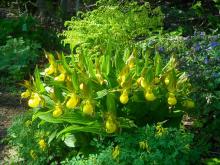
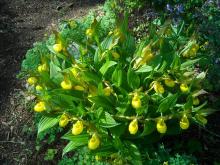
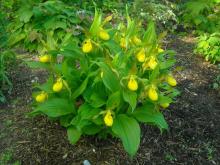
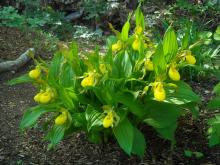
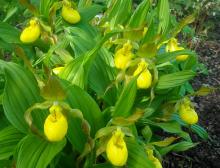
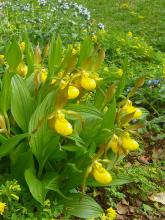
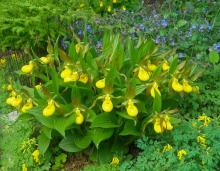
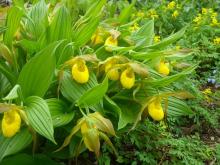
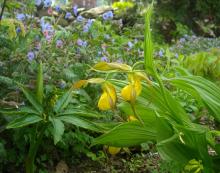
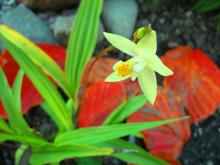
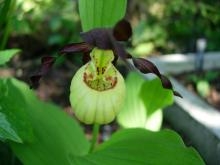
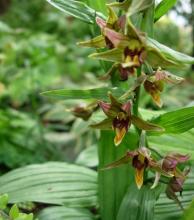
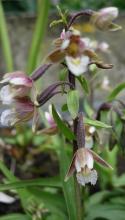
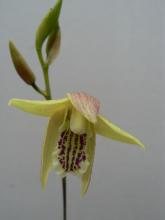
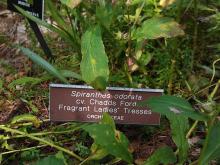
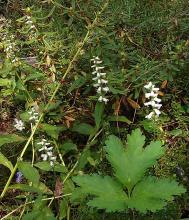
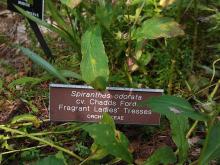
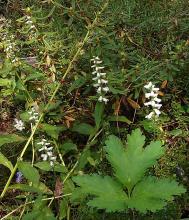
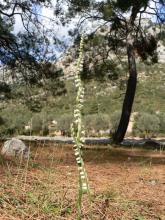

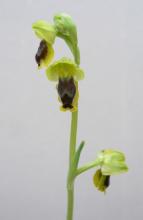

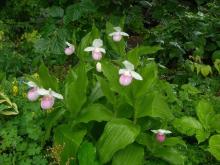
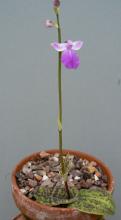
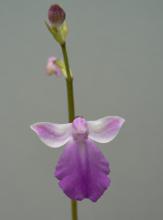
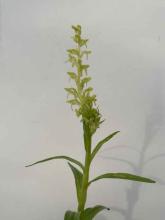
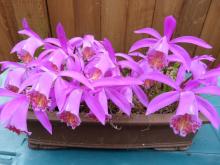
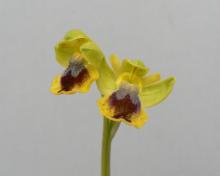
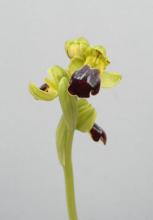
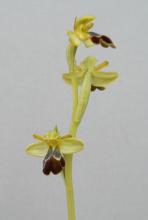
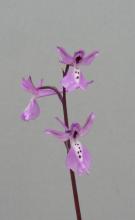
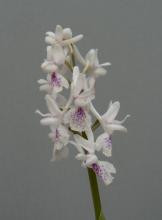
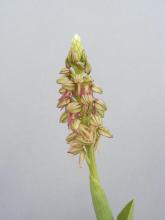
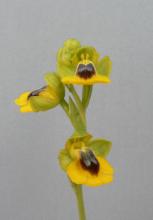
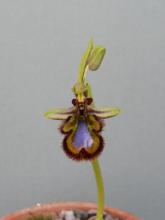
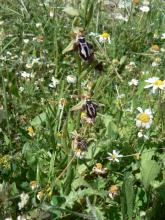
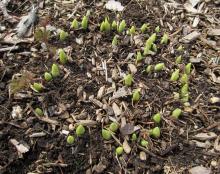
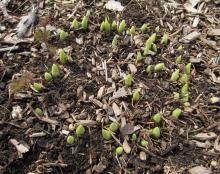
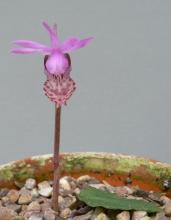
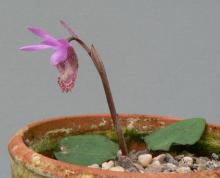
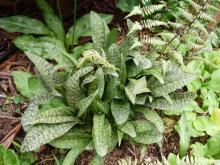
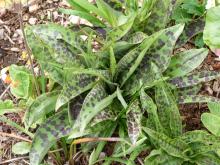
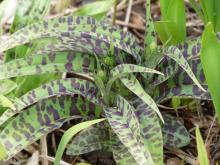
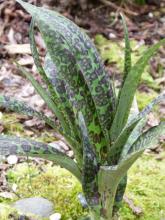
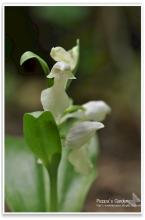
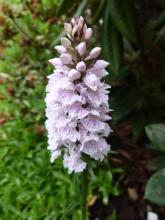
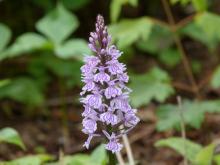
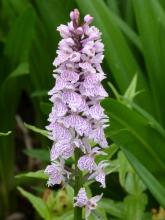
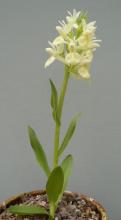
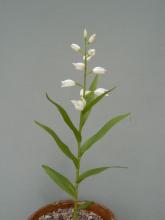
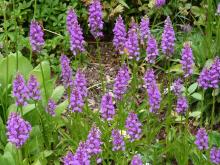
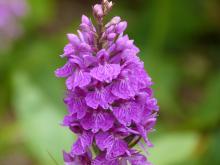
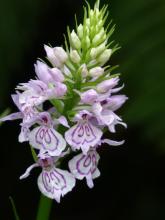
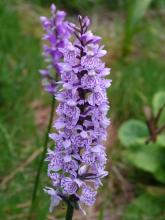
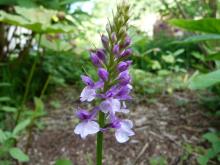
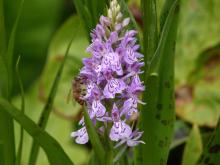
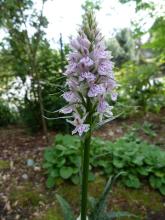
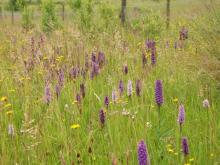
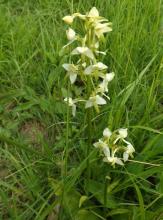
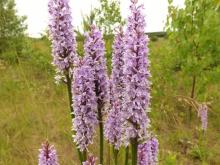
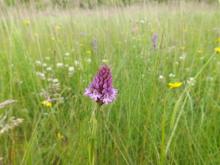
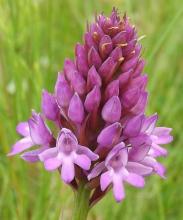
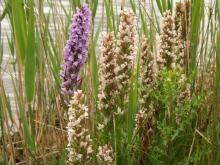
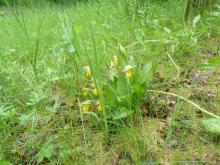
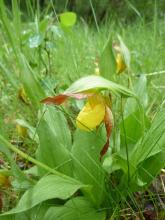
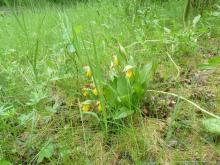
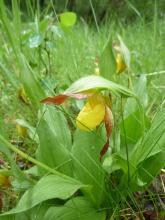
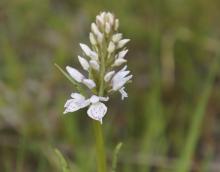
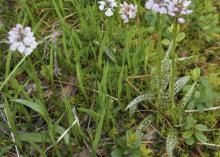
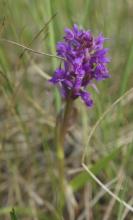
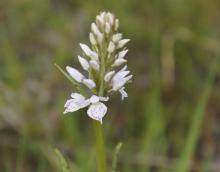
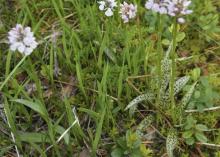
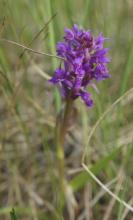
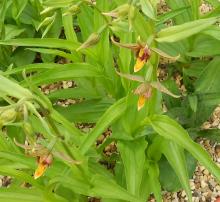
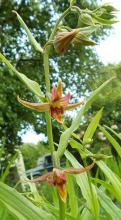
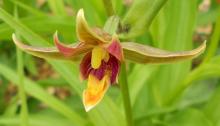
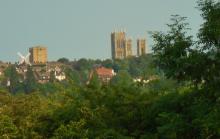
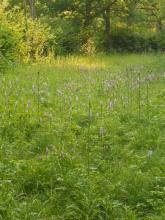
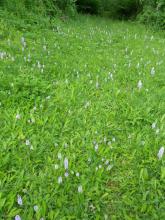
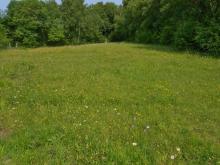












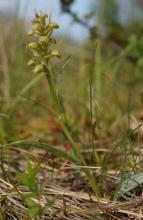
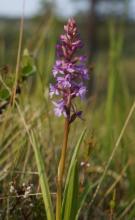
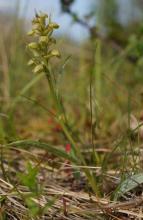
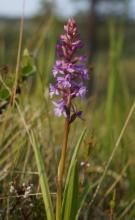
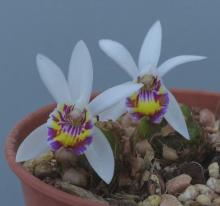
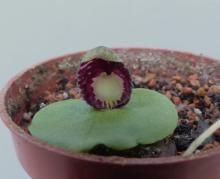
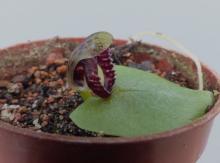
Sometimes each pic is so good, you just can't decide which ones you shouldn't keep... Beautiful specimens, Mark.
Alas, I have no orchids in my home gardens here. But there are many, many species in varied habitats near our cabin in northern Minnesota.